Selecting the right hiking gear for women is crucial to ensure a safe, comfortable, and enjoyable outdoor adventure. The right equipment not only enhances the hiking experience but also safeguards against common outdoor challenges. This blog aims to provide women with a comprehensive guide to choosing the best hiking gear tailored to their needs. From footwear to personal hygiene, we'll cover essential items that prioritize women's specific considerations, helping you prepare confidently for your next hike.
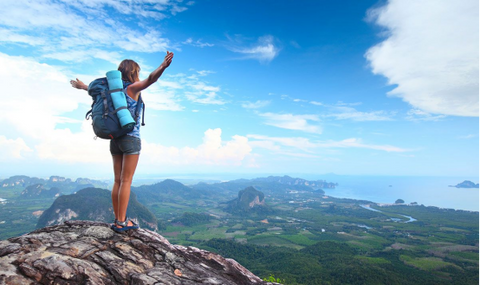
1. Footwear is the foundation of every hike
The foundation of a successful hike begins with your feet. Choosing the right footwear can prevent blisters, provide stability on uneven terrains, and protect against the elements. For women, the right fit is essential for comfort and to prevent injuries.
Recommendations for women-specific designs
- Look for brands that offer women-specific fits, which account for differences in foot shape and size.
- Consider lightweight designs with adequate support and cushioning.
Tips on choosing the right fit and breaking them in
- Measure Your Feet: Feet can swell during hikes; measure them in the afternoon for a more accurate size.
- Try Before You Buy: Wear hiking socks when trying on boots. Walk around, climb stairs, or find an inclined surface in the store.
- Break Them In: Start by wearing your boots for short periods. Gradually increase wearing time to break them in before your hike.
Selecting the right footwear is not just about comfort; it’s a critical step in hike preparation. it ensures that every step on the trail is a step toward a memorable adventure.
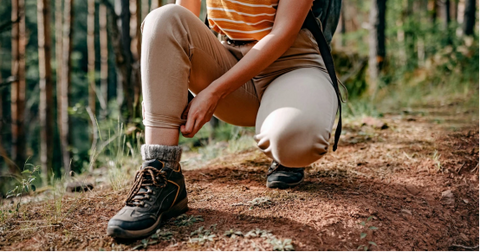
2. Effective layering is always key
Effective layering is key to comfort and protection in various weather conditions. Besides, hiking clothing specifically designed for women ensures a better fit and functionality.
Suggestions for women-specific hiking apparel
- Base Layer: Look for synthetic or wool fabrics that offer stretch and comfort.
- Insulation Layer: Tailored fits that provide warmth without bulk.
- Outer Layer: Seek out adjustable cuffs, hoods, and hem for a personalized fit.
Special considerations for weather conditions
- Waterproof and Windproof Fabrics: Essential for outer layers to protect against harsh weather.
- Breathable Fabrics: Prevent overheating and moisture buildup inside.
- UV Protection: Consider clothing with UPF rating for hikes in direct sunlight.
Choosing the right clothing with these considerations in mind ensures that women hikers can tackle trails in comfort, protected against a wide range of weather conditions.
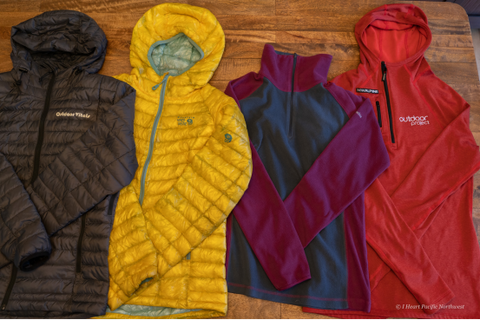
3. Choosing the right backpack size and fit for women
Selecting the right backpack is crucial for carrying gear comfortably. Women-specific backpacks are designed with narrower shoulder straps and a shorter torso length to match female body proportions. Here's how to choose the right one:
- Determine Capacity:The length of your hike dictates the size. Day hikes require 20-30 liters, while multi-day treks may need 40-60 liters or more.
- Fit is Key: Look for adjustable shoulder straps, hip belts, and torso length to ensure the pack sits properly on your back.
Features to look for in women-specific backpacks
- Ergonomic Straps:Designed to accommodate the chest and prevent discomfort.
- Hip Belts: Contoured to fit the natural curve of the hips for better weight distribution.
- Back Panel: Ventilated designs reduce sweating and increase comfort.
Packing tips to distribute weight evenly
- Heavy Items Close to Your Back: Position them in the center of the pack, near your spine.
- Medium-weight Items: Surround heavy items or place them in the middle.
- Light Items: Should be packed at the bottom and in outer pockets for easy access.
By choosing a backpack designed for women and packing wisely, hikers can maximize comfort and minimize strain, making any trek more enjoyable.
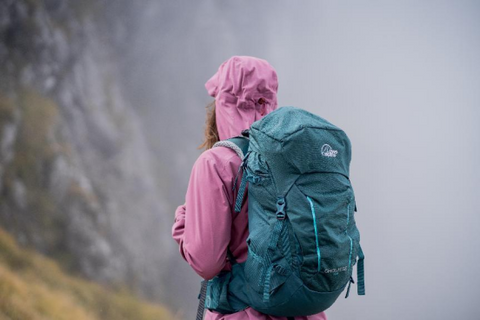
4. Hiking essentials for navigation and safety
Bringing along proper navigation and safety gear is a must for every hike. Such essentials allow for confident navigation, the handling of minor health concerns, and protection against the forces of nature, thereby enhancing the safety and enjoyment of your outdoor adventure. This equipment is not just indispensable hiking gear for women, but for everyone.
Must-have navigation tools
- Map: An up-to-date topographical map of the area.
- Compass: Essential for direction finding, even if you have a GPS.
- GPS Device: Offers precise location tracking. Ensure it's fully charged.
A fully stocked first aid kit
A well-prepared first aid kit can address minor injuries and emergencies. Essential contents include:
- Bandages and Gauze: For cuts and scrapes.
- Antiseptic Wipes: To clean wounds.
- Blister Treatments: Such as moleskin or blister pads.
- Tweezers: For splinter or tick removal.
- Pain Relievers: Like ibuprofen.
- Personal Medications: Don’t forget prescriptions or allergy meds.
Additional safety gear
- Multi-tool: Equipped with scissors, knife, and screwdrivers for repairs or emergencies.
- Headlamp: Essential for hands-free lighting, always carry extra batteries.
- Sunscreen: Protects against harmful UV rays, reducing the risk of sunburn.
- Insect Repellent: Prevents bites from mosquitoes and ticks, which can carry diseases.
Equipped with these navigation and safety essentials, hikers can confidently face a variety of conditions and situations on the trail.

5. Maintaining personal hygiene for comfort and health
While the fundamental hiking gear and preparations are generally the same for everyone, there are a few considerations and additional items that women, specifically, might find beneficial to keep in mind for comfort, safety, and practicality on the trail. They are indeed indispensable hiking gear for women.
Key personal hygiene supplies for women
- Menstrual products: Ensure you have an adequate supply of tampons, pads, or a menstrual cup, depending on your preference and the expected duration of your outdoor activity. In addition, you need to consider the disposal method for used products, especially in remote areas where proper waste management facilities may be limited.
- Urination Devices: Female urination devices (FUDs) allow you to urinate while standing, which can be particularly useful in environments where squatting is difficult or if you're wearing a harness.
- Personal Hygiene Wipes: Biodegradable wipes can be helpful for freshening up, but remember to pack them out.
Other hygiene items and practices for multi-day hikes
- Biodegradable Soap: For washing yourself and your clothes.
- Toothbrush and Toothpaste: Consider mini sizes or tablets for weight saving.
- Hand Sanitizer: Essential for before meals or after bathroom breaks.
Maintaining excellent hygiene practices on the trail, particularly during multi-day hikes, is more than just about comfort; it's about warding off infections and guaranteeing a more pleasant and healthy hiking experience.

6. Women’s unique nutritional needs and hydration strategies
While choosing the appropriate hiking gear for women is essential, recognizing and addressing their unique nutritional needs is equally important. Generally, women may have higher requirements for certain nutrients, like iron and calcium. Here's a breakdown of women's nutritional needs to help you understand what adjustments or supplements might be necessary, especially for longer hikes.
- Increased Iron Intake: Women need more iron, especially active hikers, to compensate for loss during menstruation.
- Calcium for Bone Health: Essential for preventing osteoporosis, calcium is crucial for women engaging in high-impact activities like hiking.
- Frequent Water Intake: Women should prioritize regular hydration, adjusting for intensity and climate to prevent dehydration.
- Electrolyte Balance: Utilize electrolyte supplements or drinks to maintain balance, particularly important during longer or more strenuous hikes.
Nutritional planning for energy and recovery
- High-Energy Snacks: Options like nuts, seeds, and energy bars provide quick, nutritious energy boosts.
- Protein for Muscle Repair: Incorporate protein-rich snacks or supplements post-hike for muscle recovery.
- Complex Carbohydrates: Ensure sustained energy through whole grains and legumes, ideal for longer treks.
Adapting to menstrual cycle
- Adjust Caloric Intake: Recognize changes in metabolic rate across the menstrual cycle, increasing food intake as needed for energy.
Focusing on hydration and nutrition tailored to women’s specific health needs ensures optimal performance and recovery during hiking, enhancing the overall outdoor experience.

7. Tailored advice for women hikers
In this section, we offer tailored advice specifically for women hikers, addressing their unique needs in gear selection, physical preparation, and community engagement for safer and more enjoyable outdoor experiences.
Women-specific considerations
- Sports Bras: Choose supportive sports bras to minimize discomfort and improve focus on the trail. Proper fit is crucial for long hikes.
- Menstrual Cycle Management: Plan with suitable products (tampons, pads, menstrual cups) and disposal methods to ensure uninterrupted hiking.
- Personal Safety: Equip yourself with knowledge of the trail, carry a whistle, and consider self-defense tools like pepper spray for added security.
Training and preparing physically for hikes
- Cardio Exercises: Build stamina for enduring long distances.
- Strength Training: Focus on legs, core, and back to comfortably carry gear and navigate tough terrains.
- Flexibility Workouts: Enhance agility and reduce post-hike soreness.
Building a supportive community:
- Join Women’s Hiking Groups: Engage with communities that share similar interests for companionship and shared knowledge.
- Participate in Workshops: Learn from experts about navigation, first aid, and survival techniques.
- Mentorship: Either seek guidance from experienced hikers or mentor newcomers to foster a supportive environment.
For a comfortable hiking experience, women should consider selecting gear and clothing tailored to their anatomical needs. In addition, planning for menstrual cycle management and prioritizing personal safety measures can significantly enhance comfort and peace of mind on the trail.

Ready for adventure
Armed with the right hiking gear for women, you're all set to tackle the trails with confidence. Remember, hiking is not about the destination; it's about the journey. Embrace the beauty of the outdoors, respect nature, and always leave no trace behind.
Before embarking on your adventure, take a moment to review your packing list and ensure you're equipped for the prevailing weather and trail conditions. Each hike offers valuable lessons, helping you refine your gear selection with experience. Wishing you joyful trails ahead!
 EN
EN JA
JA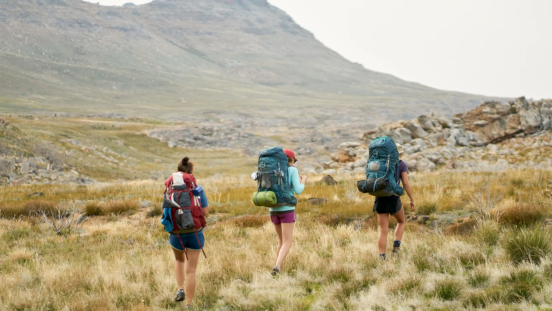



2 comments
Claudewah
pharmacy online canada: Musc Pharm – legitimate online pharmacy
Muscphpaumn
canada pharmacy reviews https://muscpharm.xyz/# MuscPharm